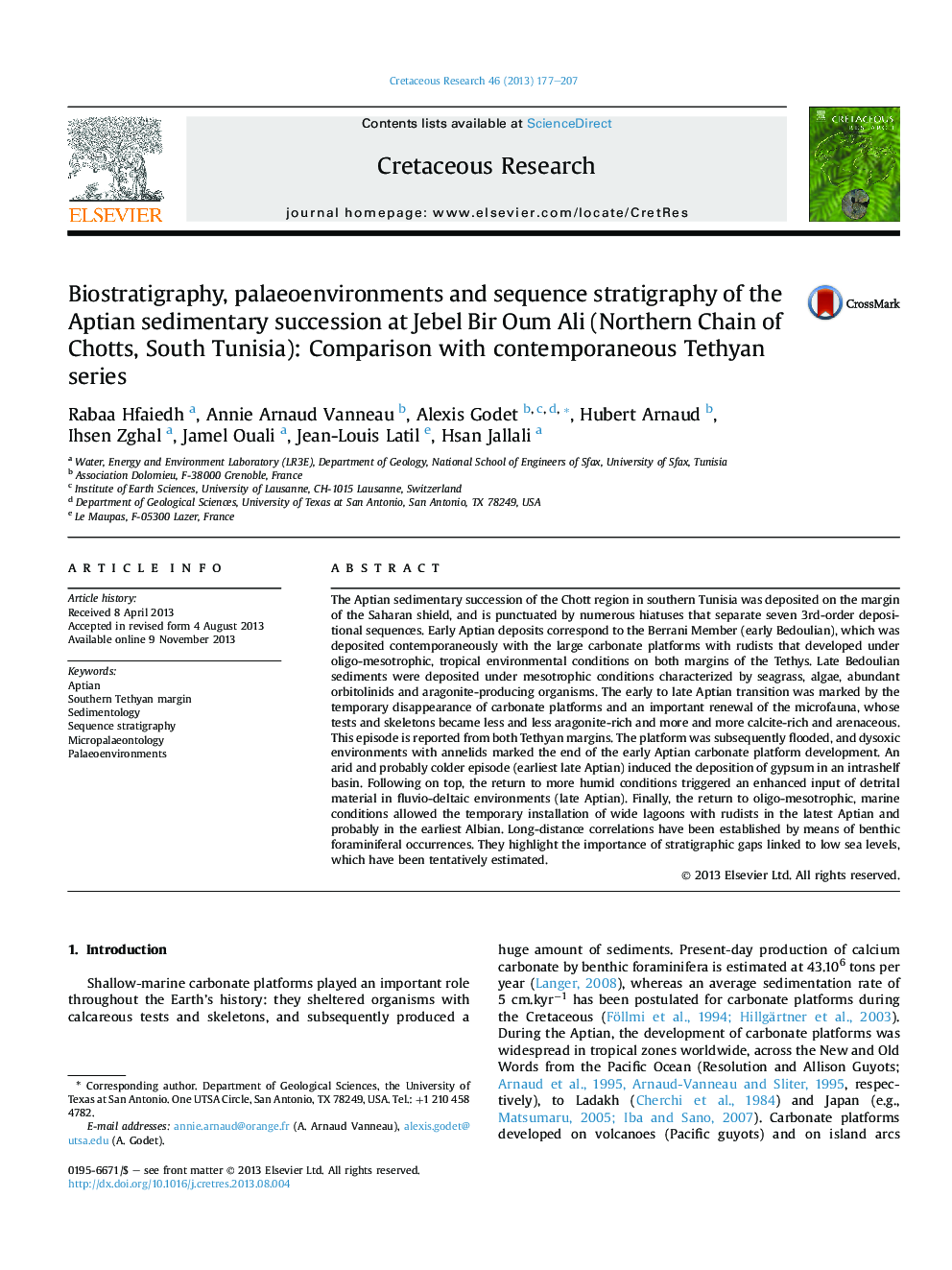| کد مقاله | کد نشریه | سال انتشار | مقاله انگلیسی | نسخه تمام متن |
|---|---|---|---|---|
| 6448320 | 1642076 | 2013 | 31 صفحه PDF | دانلود رایگان |
عنوان انگلیسی مقاله ISI
Biostratigraphy, palaeoenvironments and sequence stratigraphy of the Aptian sedimentary succession at Jebel Bir Oum Ali (Northern Chain of Chotts, South Tunisia): Comparison with contemporaneous Tethyan series
دانلود مقاله + سفارش ترجمه
دانلود مقاله ISI انگلیسی
رایگان برای ایرانیان
کلمات کلیدی
موضوعات مرتبط
مهندسی و علوم پایه
علوم زمین و سیارات
فسیل شناسی
پیش نمایش صفحه اول مقاله

چکیده انگلیسی
The Aptian sedimentary succession of the Chott region in southern Tunisia was deposited on the margin of the Saharan shield, and is punctuated by numerous hiatuses that separate seven 3rd-order depositional sequences. Early Aptian deposits correspond to the Berrani Member (early Bedoulian), which was deposited contemporaneously with the large carbonate platforms with rudists that developed under oligo-mesotrophic, tropical environmental conditions on both margins of the Tethys. Late Bedoulian sediments were deposited under mesotrophic conditions characterized by seagrass, algae, abundant orbitolinids and aragonite-producing organisms. The early to late Aptian transition was marked by the temporary disappearance of carbonate platforms and an important renewal of the microfauna, whose tests and skeletons became less and less aragonite-rich and more and more calcite-rich and arenaceous. This episode is reported from both Tethyan margins. The platform was subsequently flooded, and dysoxic environments with annelids marked the end of the early Aptian carbonate platform development. An arid and probably colder episode (earliest late Aptian) induced the deposition of gypsum in an intrashelf basin. Following on top, the return to more humid conditions triggered an enhanced input of detrital material in fluvio-deltaic environments (late Aptian). Finally, the return to oligo-mesotrophic, marine conditions allowed the temporary installation of wide lagoons with rudists in the latest Aptian and probably in the earliest Albian. Long-distance correlations have been established by means of benthic foraminiferal occurrences. They highlight the importance of stratigraphic gaps linked to low sea levels, which have been tentatively estimated.
ناشر
Database: Elsevier - ScienceDirect (ساینس دایرکت)
Journal: Cretaceous Research - Volume 46, November 2013, Pages 177-207
Journal: Cretaceous Research - Volume 46, November 2013, Pages 177-207
نویسندگان
Rabaa Hfaiedh, Annie Arnaud Vanneau, Alexis Godet, Hubert Arnaud, Ihsen Zghal, Jamel Ouali, Jean-Louis Latil, Hsan Jallali,